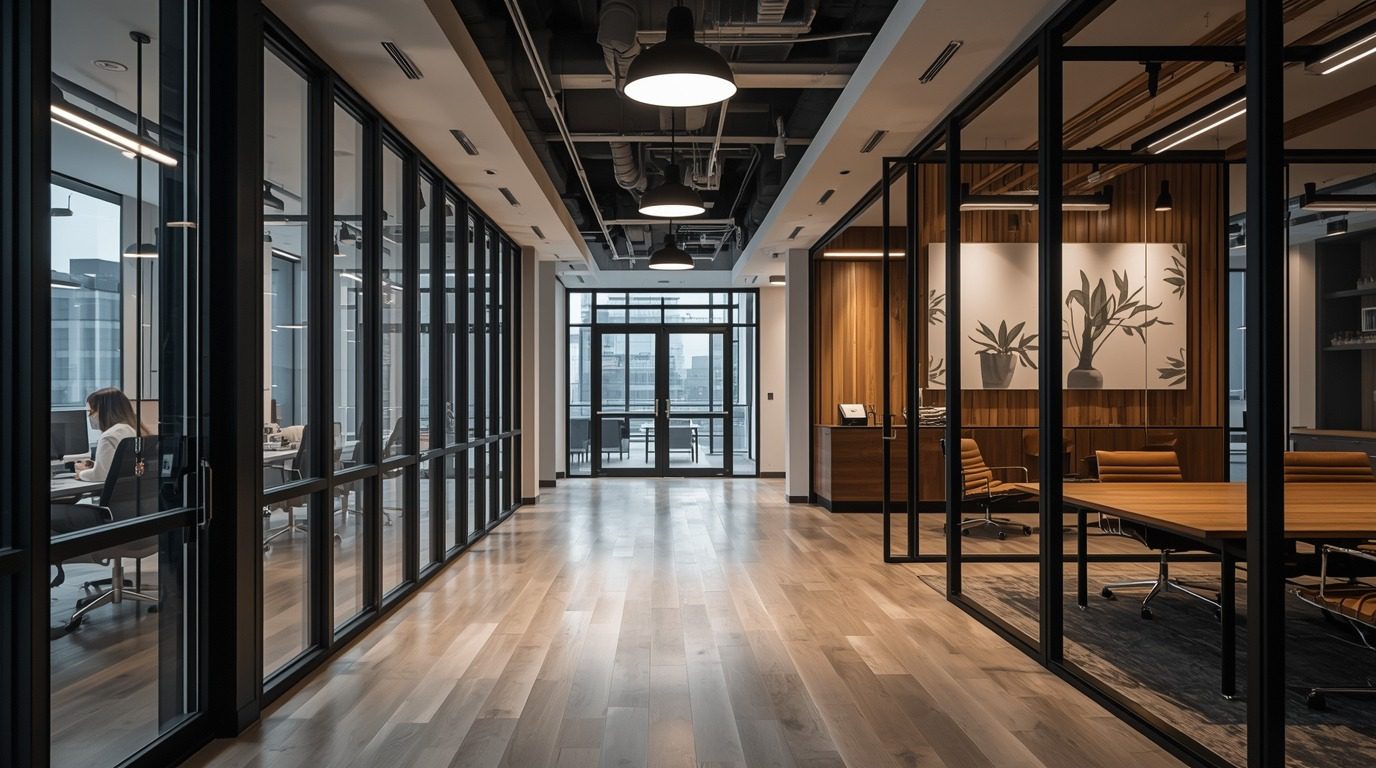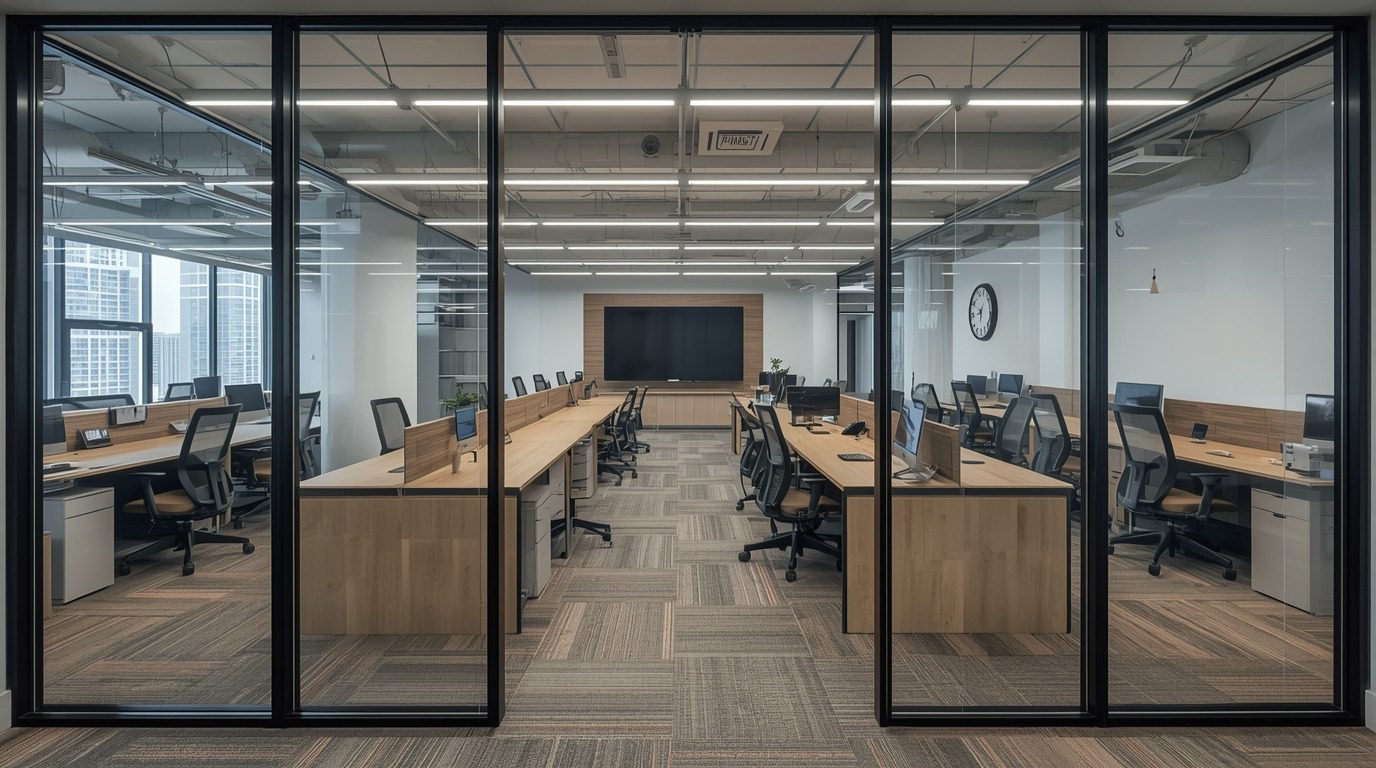In the realm of interior design, safety often takes a backseat to aesthetics, comfort, and functionality. However, safety is an essential element in designing any space, particularly in workplaces. As office spaces evolve, whether through renovations, redesigns, or new construction, prioritizing safety equipment ensures the well-being of both employees and employers. Beyond the aesthetics, safety is an integral part of any design process, playing a critical role in ensuring a healthy, productive, and accident-free environment.
In this article, we will explore why safety equipment should be a primary focus when transforming office spaces, how it contributes to a more effective workspace, and the wide range of products that businesses can rely on to maintain a safe environment.

The Importance of Safety in Office Design
In any office design project, safety is not just about complying with building regulations or avoiding potential hazards; it’s about creating a workplace that allows employees to focus on their work without the worry of accidents or health risks. Whether you are designing a new office, renovating an existing space, or upgrading equipment, safety should be incorporated into every stage of the process.

“Planning for safety should be your first step before you even pick up a hammer. This includes compliance with building codes, identifying hazards, and budgeting for safety equipment that includes gloves, masks, and eye protection.” This quote from a renovation professional emphasizes how crucial it is to consider safety from the very start. Before diving into design decisions, ensuring that safety measures are in place can prevent future complications, accidents, and even costly lawsuits.
When designing office spaces, a well-thought-out safety plan can prevent risks like tripping hazards, exposure to harmful chemicals, or accidental injuries due to improperly secured equipment. The right safety gear not only protects the workforce but also improves productivity by reducing the number of work-related injuries and illnesses.
Types of Safety Equipment Essential in Office Spaces

When outfitting an office with the necessary safety gear, it’s essential to cover all potential risks. The following types of equipment should be considered as part of your interior design plan to create a safe and secure work environment:
1. Personal Protective Equipment (PPE)
Personal protective equipment is the first line of defense against workplace hazards. From construction zones to renovation sites, workers may be exposed to dangerous conditions, including flying debris, dust, chemicals, or noise. Having the proper PPE helps mitigate those risks.
- Gloves: Protective gloves are essential for handling materials, operating equipment, or performing tasks that could expose workers to cuts, burns, or chemical exposure.
- Face Masks and Respirators: Face masks and respirators are crucial for environments where employees are exposed to dust, fumes, or harmful airborne particles, which are common during office renovations or deep cleaning projects.
- Eye Protection: Safety goggles or face shields are indispensable when cutting, grinding, or working with any tools that may cause flying debris or sparks.
- Ear Protection: Noise levels can pose a significant threat to hearing health in open-concept offices or construction areas. Offering earmuffs or earplugs can help reduce noise exposure.
- Headgear: Hard hats or safety helmets should be provided for staff working in areas where there is a risk of falling objects or construction activity.
These basic PPE products are available in bulk at safetysourcellc.com, ensuring companies can source everything they need at the best prices.
2. Safety Signage and Barricades
When dealing with construction or renovation, safety signage is critical to notify workers and visitors of potential hazards. Clear markings such as “wet floor” signs, “construction zone,” and emergency exits can prevent accidents. Furthermore, setting up physical barriers or barricades helps limit unauthorized access to dangerous areas.
3. First Aid Kits
Even with the best safety measures in place, accidents can still happen. Equipping the office with first aid kits stocked with essential supplies, including bandages, antiseptics, burn creams, and eyewash solutions, can be vital for dealing with minor injuries before professional medical help arrives.
4. Fire Safety Equipment
Fire extinguishers, fire blankets, and smoke detectors are integral safety components for any office. Ensuring fire safety measures are in place and employees are trained in their use can prevent disastrous outcomes in case of an emergency.
Incorporating Safety Equipment Into the Interior Design Process
Integrating safety equipment into interior design should not be seen as an afterthought. It should be strategically woven into the layout, furniture choices, and the overall design plan of the office. For example:
- Layout and Floor Plans: Keep walkways clear, ensure emergency exits are easily accessible, and avoid creating tight corners where movement may be restricted.
- Furniture Choices: Opt for furniture with rounded edges to minimize injury risks. Also, consider ergonomically designed workstations that encourage better posture and reduce strain on employees.
- Lighting: Proper lighting should be incorporated into office spaces, especially in high-risk areas like stairways, hallways, and storage rooms. Well-lit spaces reduce the chance of accidents and improve overall visibility for employees.
How Safety Equipment Enhances Employee Well-being and Productivity
Beyond the physical protection of employees, having the appropriate safety gear creates a positive work culture that values employees’ health and safety. When staff feel safe and well-protected, it boosts their morale and confidence in the workplace. This, in turn, can lead to higher productivity levels and greater job satisfaction.

“Creating a safe work site involves keeping the space clean and organized, safely storing tools and materials, inspecting equipment before use, and securing the area to prevent unauthorized access—especially important during renovation stages that architects plan for.” This advice highlights the importance of maintaining a safe and orderly work environment, which not only ensures employee safety but also contributes to a more efficient and effective workflow.
Cost-Effective Solutions for Safety Equipment
Equipping an office with safety equipment may seem like an expensive undertaking. However, when businesses purchase safety supplies in bulk or wholesale, the cost per item is significantly reduced. Safety Source LLC, a leading supplier of wholesale safety equipment, offers competitive prices on everything from gloves, face masks, and eyewear to more specialized items such as first aid kits and ear protection. Buying in bulk allows companies to provide safety gear for their entire workforce without breaking the bank.
Moreover, with the ability to customize items such as safety hats and high-vis vests with company logos, businesses can create a unified and professional look while ensuring the safety of their staff.
Conclusion
Designing office spaces with safety in mind is not just a legal obligation; it’s a vital aspect of creating a work environment that fosters productivity, well-being, and comfort. By incorporating safety equipment into the design process, businesses ensure their employees are well-protected from potential hazards. Whether outfitting the office with basic PPE or investing in fire safety equipment, the range of safety supplies available can help companies create a safer workspace for all.
For businesses looking to make their office spaces safer, The Safety Source offers an extensive range of wholesale safety supplies, ensuring that employers can access the best products at competitive prices.
Investing in safety equipment doesn’t just protect employees—it transforms the workplace into a space where everyone can work more effectively and with greater peace of mind.

